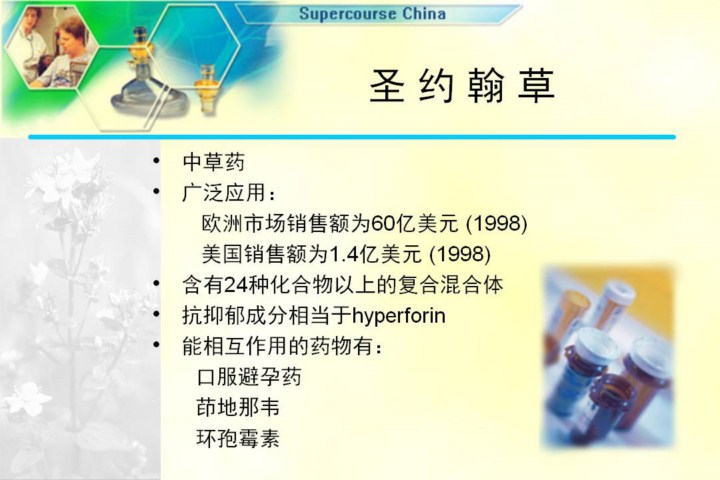| front |1 |2 |3 |4 |5 |6 |7 |8 |9 |10 |11 |12 |13 |14 |15 |16 |17 |18 |19 |20 |21 |22 |23 |24 |25 |26 |27 |28 |29 |review |
 |
Iím going to begin by summarizing work thatís being done related to herbal medicines. I mentioned our study with NIMH of St. Johnís Wort. Let me give you some background and some idea of what weíre trying to achieve here. This is a medicinal herb thatís incredibly popular with $6 billion of sales in a single year in Europe by this survey in 1998. Itís used primarily for treatment of depression, other mood disorders -- anxiety disorders, many other conditions. Like all plants, itís a complex mixture of many chemical constituents. We know that at least one of those constituents, hyperforin, contributes to its antidepressant action, and we have learned, as Iíll show you through work done right here in the NIH clinical center as well as smaller studies elsewhere, that St. Johnís Wort, while it may be active in depression and other clinical conditions, also interacts with drugs: birth control pills, AIDS drugs, and drugs important for preserving the survival of transplanted organs. Now, itís the background suggesting that St. Johnís Wort was effective for depression that led my colleagues in 1998 to begin to design a study that has been conducted and, as I said, completed. Let me give you a sense of the background data and how it evolves in this somewhat contentious field.
圣.约翰草 草药 野生用: 欧洲市场销售额为60亿美元(1998年) 美国的销售量为1.4亿美元(1998) 含有24种以上化合物的复合混合体 抗抑郁成分相当于hyperforin 发生相互反应的药物有: 口服避孕药 茚地那韦 环孢霉素 |